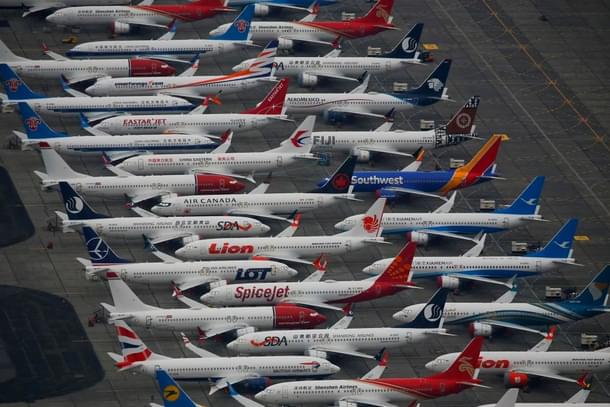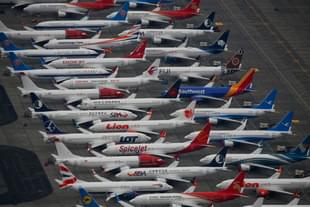Infrastructure
India’s Aviation Market Set To Soar: 300 Million Domestic Flyers Expected by 2030, $11 Billion Investment Planned
V Bhagya Subhashini
Oct 08, 2024, 01:43 PM | Updated 01:43 PM IST
Save & read from anywhere!
Bookmark stories for easy access on any device or the Swarajya app.


India’s domestic air passenger traffic is expected to reach a staggering 300 million by 2030, reflecting the rapid growth trajectory of the nation's civil aviation sector. Civil Aviation Minister K Rammohan Naidu announced on Monday (7 October) that around $11 billion has been earmarked for airport development.
His remarks were made at a conference in New Delhi organised by the French Aerospace Industries Association (GIFAS), where he highlighted India’s status as one of the fastest-growing aviation markets globally.
Significant Expansion of Airports and Fleet Capacity
The anticipated surge in passenger numbers is prompting a major expansion of both airport infrastructure and airline fleets. Currently, India operates 157 airports, heliports, and waterdromes, and there are plans to develop an additional 200 airports over the next two decades.
By 2025, the number of operational airports is expected to rise to 200, indicating a significant commitment to enhancing connectivity across the country.
Former civil Aviation Minister Jyotiraditya Scindia, speaking separately, also outlined the transformative progress in India’s airport infrastructure. When Prime Minister Narendra Modi's government came to power in 2014, India had only 74 airports, heliports, and waterports—a number that has since nearly doubled.
India's burgeoning aviation demand is driving airline operators to expand their fleets considerably, with up to 1,400 additional planes expected to be ordered within the next five years. This growth is crucial to meet the rising passenger demand and maintain service quality across domestic and international routes. The fleet size of Indian carriers has already grown from 400 aircraft in 2014 to 700 in 2023, marking a 75 per cent increase.
Growth in Passenger and Cargo Traffic
The aviation sector has witnessed a tremendous rise in both passenger and cargo volumes over the last decade. Domestic air passenger numbers have surged from 60 million in 2013-14 to 145 million in 2023, an increase of 135 per cent. Meanwhile, international passenger traffic grew by 50 per cent during the same period, reaching 70 million.
Cargo traffic also saw substantial growth, with total cargo volumes, including both domestic and international, rising from 2.2 million tonnes to 3.6 million tonnes—a 65 per cent increase. This growth underscores India's emerging role as a major hub in the global aviation landscape.
Collaboration with France on Sustainable Aviation
In addition to infrastructure and fleet expansion, India is focusing on sustainability in aviation. As per Financial Express report, Minister Naidu pointed to the potential for collaboration between India and France in building a sustainable aviation fuel (SAF) supply chain, which will be key to reducing the environmental impact of the growing aviation sector.
Strengthening ties with international partners like France could also help India meet its ambitious sustainability targets.
India's civil aviation sector is on the cusp of a transformative decade, with substantial investments in infrastructure and expansion of fleet capacity aimed at meeting the soaring demand for air travel.
V Bhagya Subhashini is a staff writer at Swarajya. She tracks infrastructure developments.




